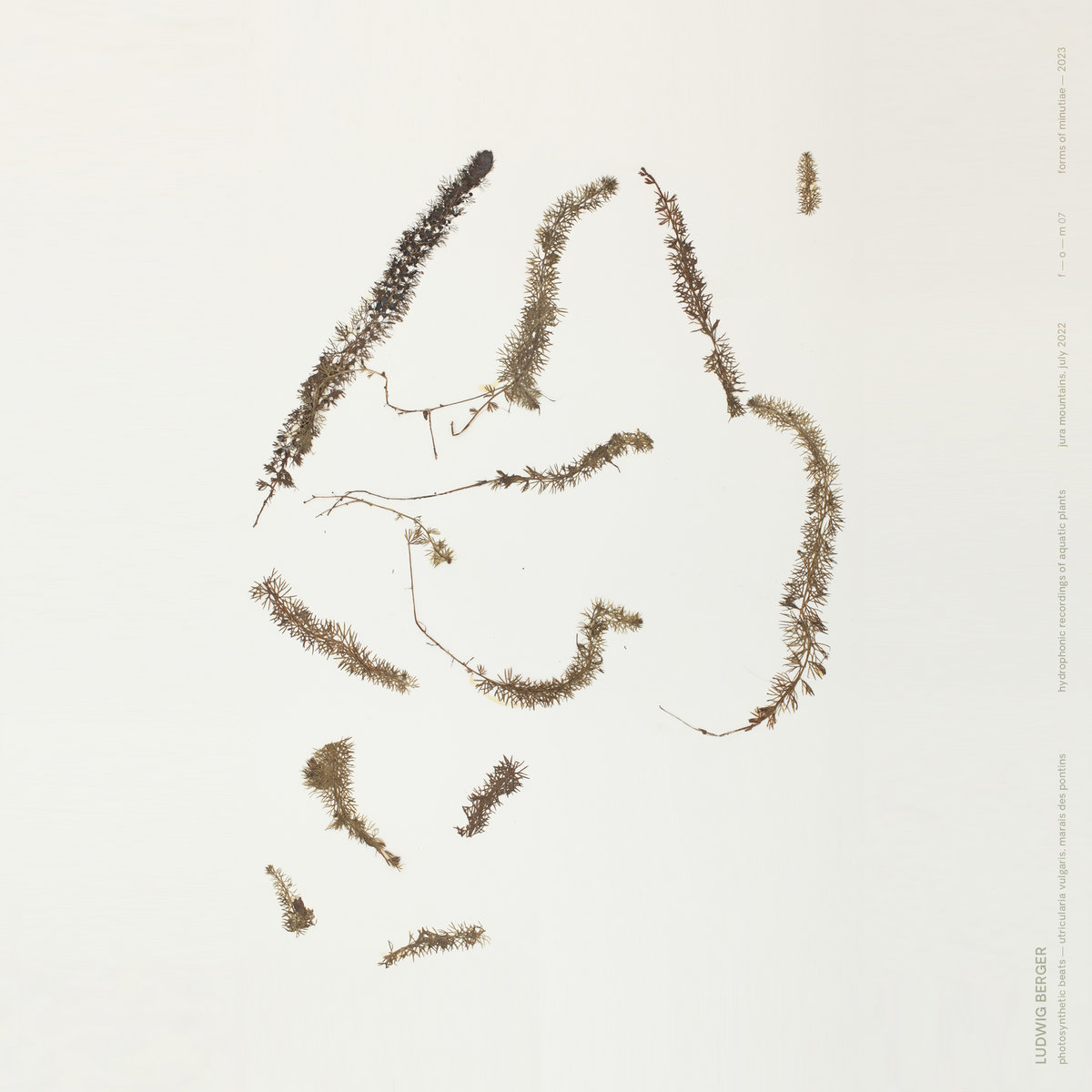Forms of Minutiae haben jüngst eine LP des Klangkünstlers Ludwig Berger herausgebracht. Die zwei Stücke auf “photosynthetic beats – utricularia vulgaris, marais des pontins” basieren auf Aufnahmen, die Berger unter der Wasseroberfläche zweier sumpfiger Tümpel im Schweizer Kanton Jura gemacht hatte – zentrales Objekt waren die unregelmäßigen polyrhythmischen Pulsationen, die sich ereignen, wenn die Unterwasserpflanzen – es handelt sich um eine fleischfressende Pflanzenart namens Gewöhnlicher Wasserschlauch (Utricularia vulgaris) – bei ihrer Photosynthese kleine Sauerstoffblasen an ihren Stielen und Blättern absondern. Die beiden nicht nachträglich bearbeiteten Aufnahmen, die alle einen durchweg “elektronisch” klingenden Charakter haben, dabei aber immer auch eine subtil “aquatische” Färbung annehmen unterscheiden sich nur insofern, dass der Künstler im zweiten Fall mittels Schatten in den Prozess der rhythmischen Bewegung eingegriffen hat. Zwölf Loops kurzer rhythmischer Muster aus dem Fundus der Aufnahmen runden die Veröffentlichung ab und wirken dabei wie ein Tribut an die Regelmäßigkeit, die die Original-Aufnahmen verweigern. Das Album ist als LP und zum Download erhältlich.
“On a too-hot summer day in the Swiss Jura, Ludwig Berger was listening to bog ponds with an underwater microphone. Below the surface, lay a swarming tapestry of submerged greenery bathing in sunlight. These were the aqueous cradle of oscillations essential to our world. As aquatic plants photosynthesize, they release oxygen bubbles from their stems and leaves. The moment of release creates myriads of extremely short sound pulses, resulting in ever-changing polyrhythms stemming from different parts of the plant. At a particularly high frequency, the pulses become continuous tones. From these sounds, one can deduce if and how strongly the plant is converting CO2 to oxygen. This depends on light and temperature, but is also affected by contaminants, fertilizers or pesticides. The two recordings were made in two different ponds, and in both cases the hydrophone was in close proximity to a common bladderwort (Utricularia vulgaris), a carnivorous aquatic plant. While in the first recording the process is left to itself, Berger intervenes in the second by using shadows to regulate the pace of activity. At first accidentally, then intentionally, the interplay of light and shadow triggered the plants to respond with various temporal and tonal shifts.
To emphasize the microscopic processes and polyrhythms of the plants, these recordings were saturated, equalized and dynamically processed. Yet they remain unedited and unchanged in their temporality. Later on, twelve loops were extracted from the recordings to further highlight the percussive nature of these photosynthetic phenomena. These loops are featured as locked grooves on the release’s vinyl format”. (Forms of Minutiae)

